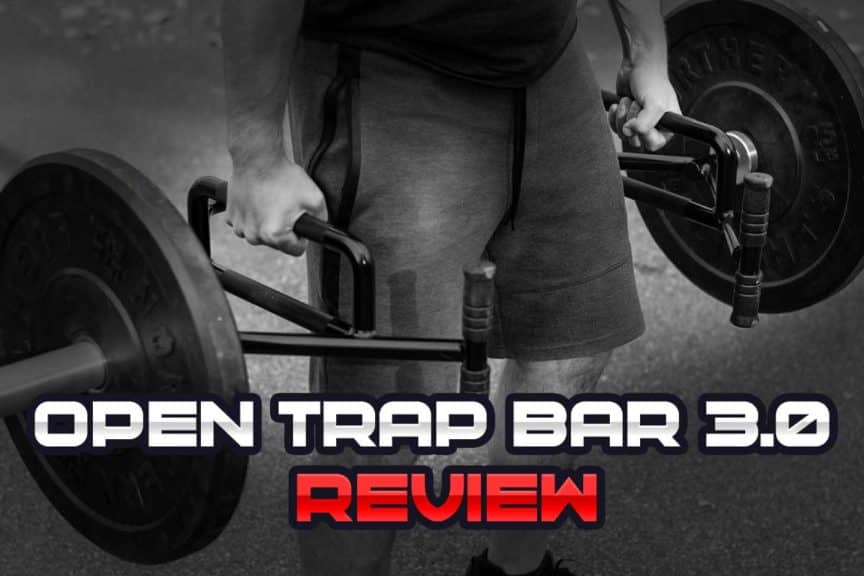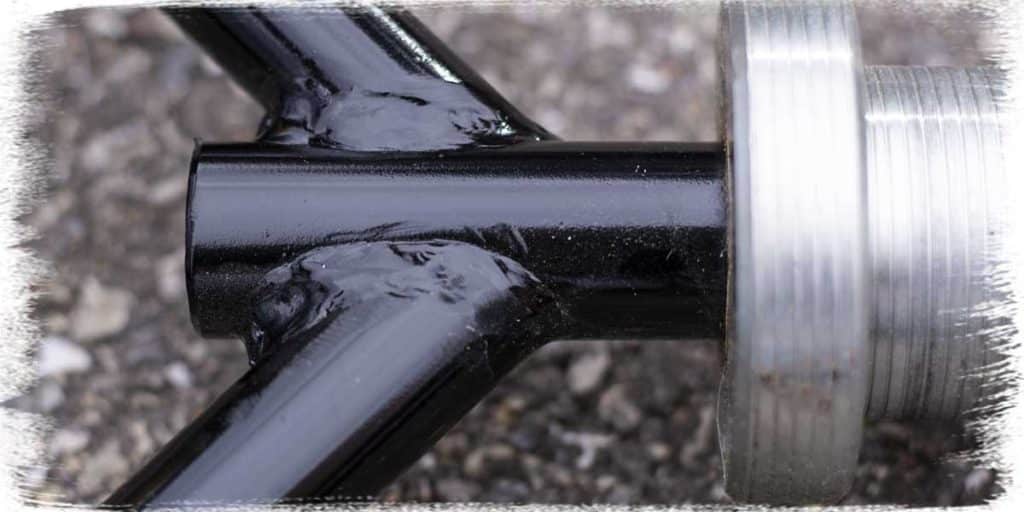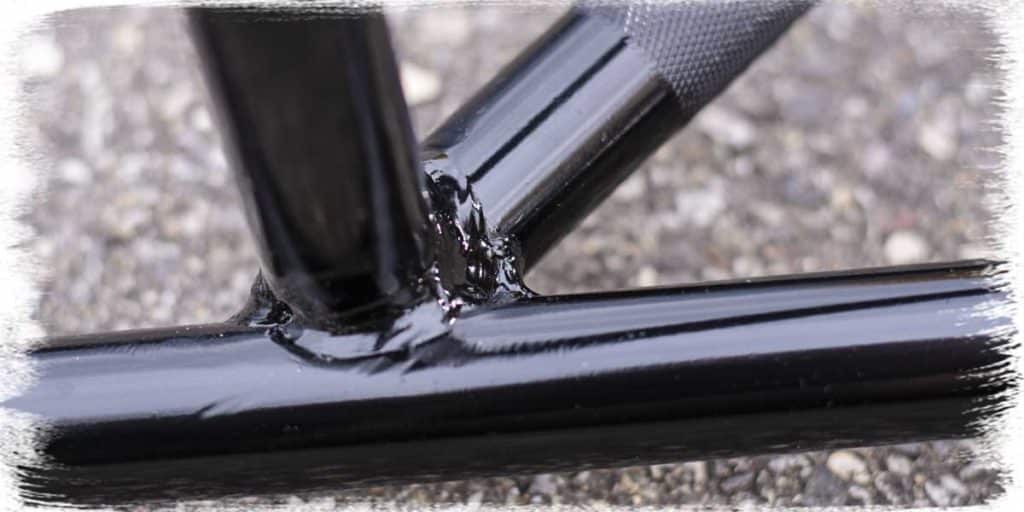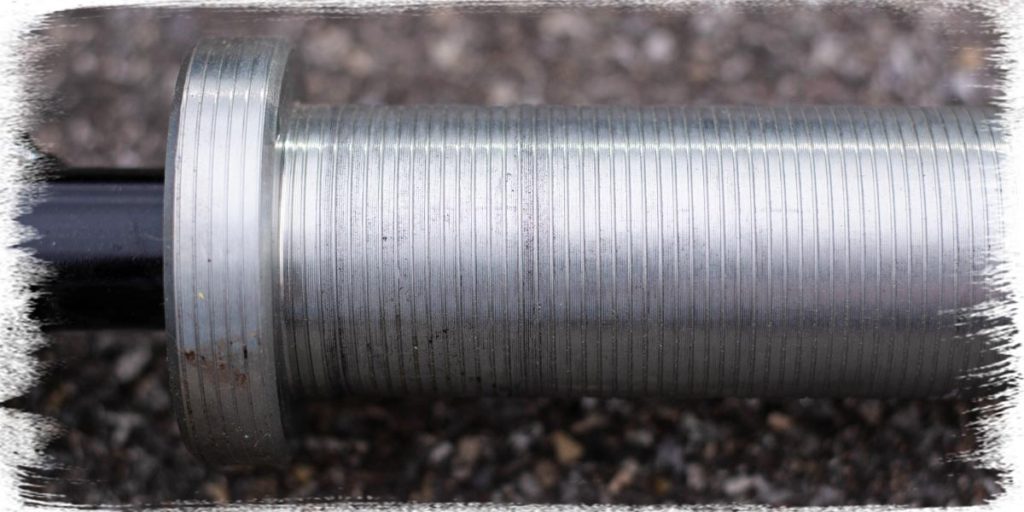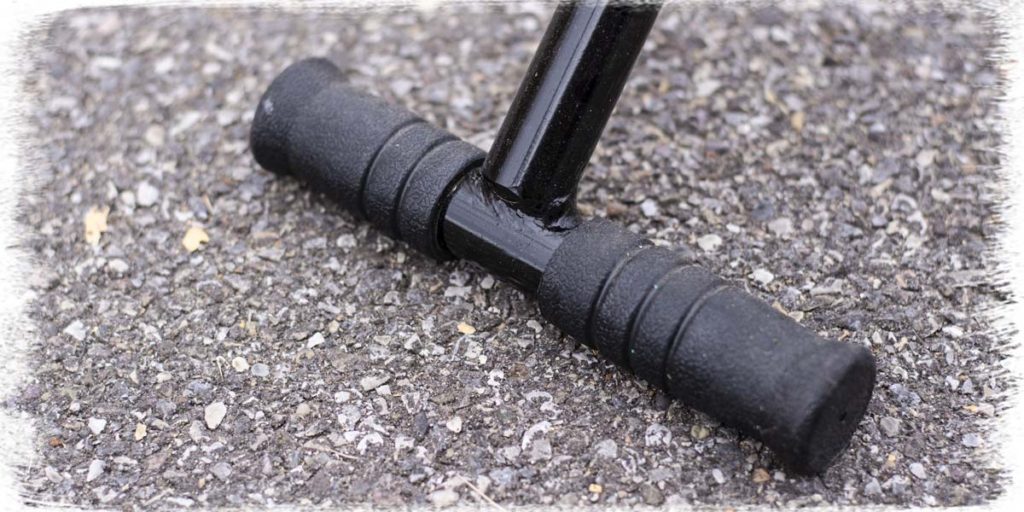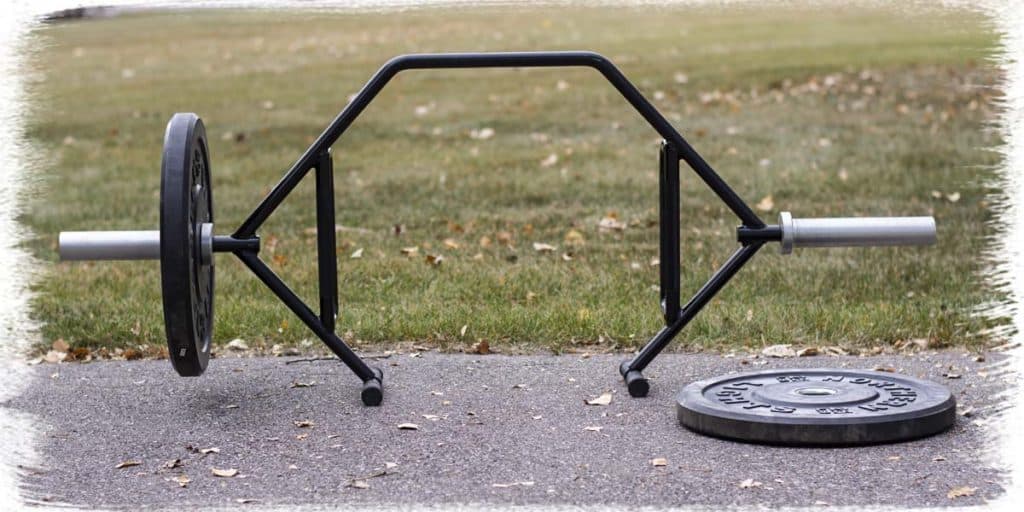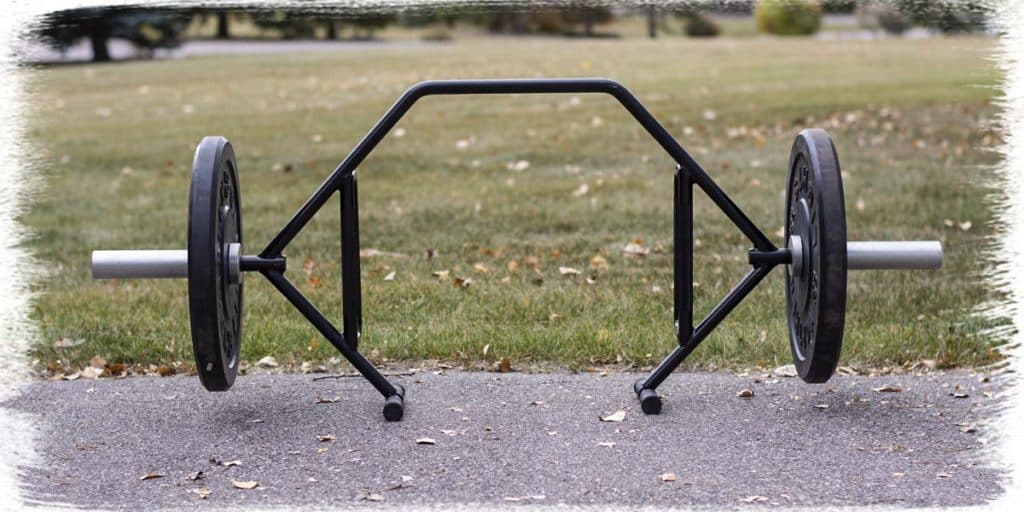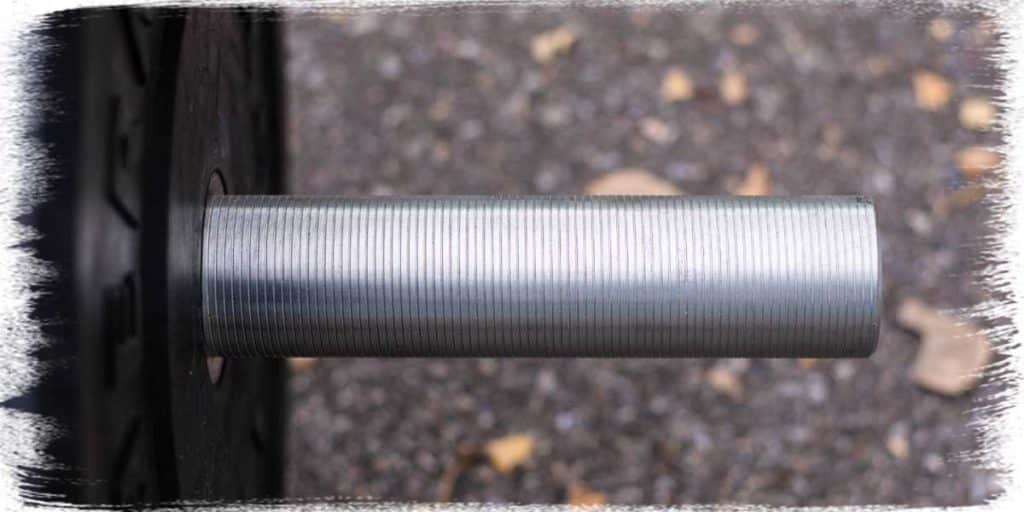This review will be going over all of the details worthy of knowing for the Bells of Steel open trap bar 3.0. Spending your hard-earned cash on a new piece of equipment should only be done when you feel confident that it will be a worthwhile purchase. So, if you want to know if this bar is worth it or not, this article is for you!
Let’s not waste your time here; here’s the quick takeaway of this article:
The Bells of Steel Open Trap Bar 3.0 is an excellent option for those looking for:
• A versatile trap bar that doesn’t take up large amounts of space or break the bank.
• A trap bar with overall high-quality construction
• A built-in jack stand to make plate loading and unloading a breeze.
Now, if you want a detailed breakdown of this bar, all that it has to offer and what sets it apart from other trap bars out on the market, then keep on reading!
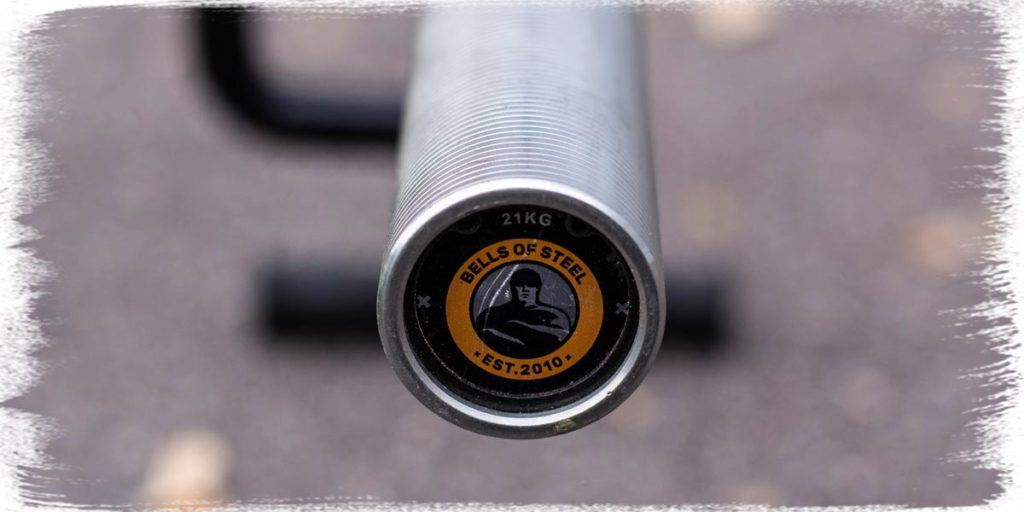
ARTICLE OVERVIEW (Quick Links)
If you’re pressed for time, click/tap on any of the following headlines to instantly jump to that particular section!
• Construction quality
• Cost:benefit ratio
• Strengths of the 3.0 open trap bar
• Weaknesses of the 3.0 open trap bar
• Who is this bar REALLY for (and is it worth it)?
If you’d like to purchase this bar, you can do so through any of the links on this page; these are affiliate links, which means that I earn a small commission at no extra cost to you if you purchase through them. I use these costs to offset the expenses I incur with running this website.
Related article: Six Benefits of Using A Glute-Ham Roller (Here’s Why You Need One)
Construction quality
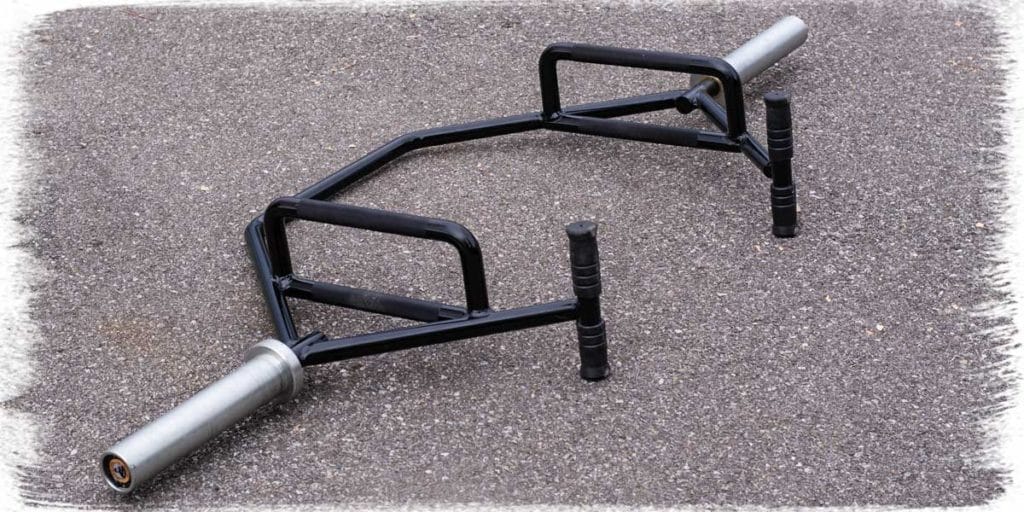
As with any piece of weightlifting equipment, construction quality is everything; any weightlifting bar, regardless of its type, needs to have the ability to hold up to extensive amounts of use (and even abuse) through high loads and forces that they’re constantly being subjected to.
The construction quality of the open trap bar 3.0 is everything you would expect to have in a bar meant for repeatedly pulling high levels of weight. The welds are strong, the knurling is sufficient, and the sleeves rotate smoothly.
Here are each of these features in a bit more detail:
Welding
Since the open trap bar can be prone to higher torque levels due to having an open frame, it’s reasonable to have questions about the robustness of the welds and overall sturdiness.
The welds are more than adequate, and even under higher loads, I’ve never had any concerns about the overall integrity of the bar. Enough said.
Knurling
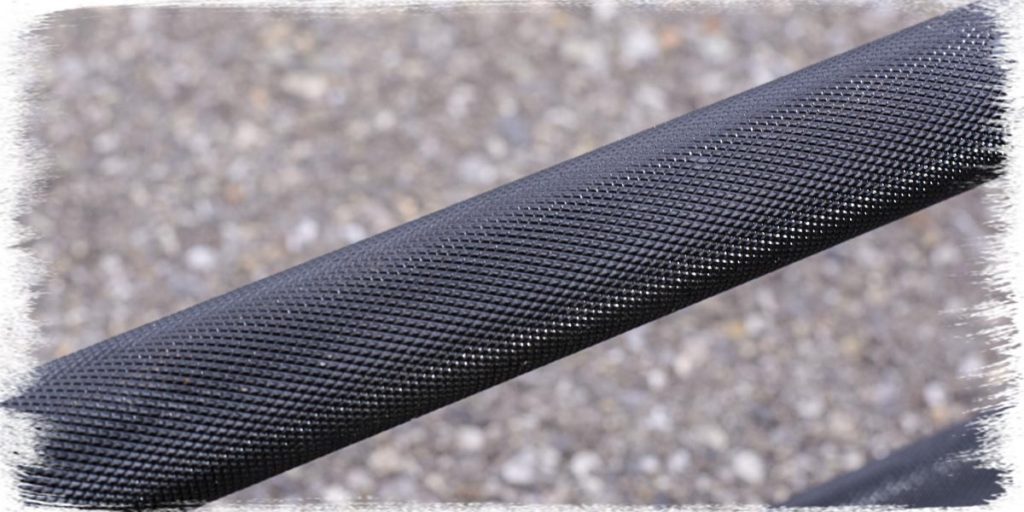
Knurling quality can be an absolute make-or-break feature when it comes to purchasing a barbell. While every lifter will have their own individual preferences regarding how aggressive they want the knurling to be, the fact of the matter is that knurling does matter.
The open trap bar 3.0’s knurling is certainly adequate, being appropriately aggressive, though not quite as aggressive as I would personally like it to be (I generally prefer knurling to be on the rather aggressive side).
That being said, it is certainly acceptable for my own lifting demands. Most lifters who are lifting moderate-to-heavy loads will likely be satisfied with how the bar feels in the hands. Put a little bit of chalk in the mix if you so desire, and I’d say it’s highly unlikely that you’ll have any grip-related issues stemming from the knurling itself.
Sleeves
Aside from the sleeves being able to rotate (discussed later within this article — as a definite strength), they also have a mild thread/ribbed surface to minimize plate shift when performing lifts or loaded carries. It’s certainly a nice added feature and one that’s been designed to enhance one’s overall lifting experience with the bar.
The sleeve length is slightly shorter than a standard sleeve length, which could be seen as a pro or a con (discussed later in the article). However, in terms of the quality, there’s nothing to gripe about here.
Cost:benefit ratio
At the time of publishing this article, the open trap bar 3.0 goes for $274.99 (USD) or $324.99 (CAD), depending on whether you purchase from their US site or Canadian site.
Considering all the training versatility that a traditional trap bar offers and all of the additional exercises you’ll be able to perform on top of that due to the 3.0’s open-frame design, the cost-to-benefit ratio is quite favorable.
When compared to other mainstream open trap bars, such as the Kabuki open trap bar, the Eleiko Öppen deadlift bar trap bar (both of which are great bars), the Bells of Steel 3.0 open trap bar costs significantly less — hundreds of dollars less — than it’s counterparts.
Despite the significantly lower cost of the bar, the quality remains top-notch and hasn’t been sacrificed.
When also factoring in the added benefit of rotating sleeves (discussed further in the article), you now also have:
- A much smoother lifting experience
- Added extra exercises you gain over a traditional closed-trap bar
- A whole bunch of extra dollars leftover in your wallet than if purchasing other popular open trap bars.
Strengths of the 3.0 open trap bar
There are a lot of strengths to unpack and discuss when it comes to this particular trap bar, so I’ll be breaking each one down into its own respective category.
Versatility
Any open trap bar on the market will have an expanded application versatility when it comes to exercises than the more traditional closed trap bar. So, while this versatility isn’t necessarily unique compared to any other open trap bar, it’s certainly a strength when compared to closed/traditional trap bars.
If you’re curious as to some of the additional exercises that can be performed with this particular open trap bar that can’t be performed with a standard trap bar (and even with some other specific open trap bars), check out my articles:
- Open Trap Bar: Superior to Traditional Trap Bars (Here’s Why)
- Open Trap Bar Exercises You CAN’T Do With A Conventional Trap Bar
This is a profound strength of this particular trap bar since it dramatically expands one’s training versatility while saving both money and floor space in the process.
Equipment and exercise versatility is high up on just about anyone’s home gym priorities, as the ability to expand exercise repertoire while simultaneously saving space AND money in the process is simply a win-win-win situation.
More concisely put: the more you can get done with a single piece of equipment, the better. And the open trap bar 3.0 provides exceptional ability to do just that.
Smaller Footprint
The overall size of the open trap bar 3.0 could be seen as a strength or weakness, depending on how you plan on using the bar. However, for the vast majority of users (including home gym enthusiasts and small-gym owners), I would contend that the smaller size of this bar (when compared to other open trap bars) tends to be most commonly a strength as opposed to a weakness.
While there are other open trap bars on the market, such as the Kabuki open trap bar, the Eleiko Öppen deadlift bar trap bar, these bars tend to take up a much more significant amount of real estate. They’re still great bars of course but likely aren’t for you if space (or cost) is a concern.
With most home gyms (and many gyms in general), space (and money) is precious, and the smaller the footprint that each piece of equipment takes up (either when using or storing), the better.
Built-in deadlift jack
If you’re someone who loads multiple plates on each side of your bar (pretty common with a trap bar of any type), the built-in deadlift jack is a feature you will greatly appreciate. Saving your energy for your lifting and not spending it on loading and unloading your bar is the preference of just about every lifter that exists. I’m assuming that your preferences are no different.
The deadlift jack doesn’t compromise the functionality or integrity of the bar in any sort of way. Still, it can absolutely save plenty of time and energy when you’re stacking or removing multiple plates on each side of the bar.
This feature’s brilliance has led me to wonder why it wasn’t adopted sooner on other open trap bars or why it’s still not adopted with some other brands.
Rotating sleeves
The rotating sleeves that you’ll find on this 3.0 trap bar are a very welcomed feature and certainly not a feature you find on a lot of other trap bars. If you’re someone who performs any sort of loaded carries (such as farmer’s walks) as part of your workouts, you’ll especially appreciate this feature.
Rotating sleeves will afford a smoother overall lifting experience when it comes to setting up in the starting positions of your lifts and performing other exercises such as farmer’s carries or even shoulder presses (yes, you can do those with this bar).
Sleeve rotation ensures the plates themselves aren’t getting bound down to an otherwise stationary sleeve, which can reduce the fluidity of setting up and subsequent execution of an exercise. This comes in especially handy with farmer’s walks, as the fluid movement of the sleeve prevents any forwards or backwards jerking that you may feel if the plate is getting bound down on a non-rotating sleeve.
High/low handles
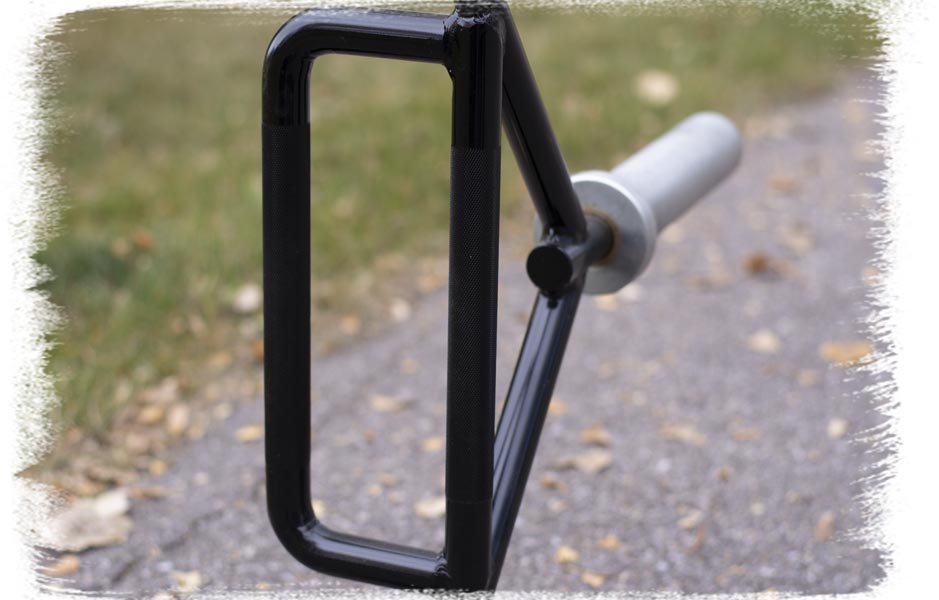
One of the other features that the folks at Bells of Steel got right is ensuring that their open trap bar has high and low handles. While this isn’t a feature exclusive to open trap bars, it’s certainly seen as necessary for any trap bar that I purchase.
Cheaper/less ideal trap bars (open or closed) only have a single handle, oftentimes being the higher handle. This can really limit the bar’s versatility in terms of ranges of motion that a lifter may want to have access to for deadlifts. Lower handles tend to require more range of motion for deadlifting, while higher handles require less.
Having the option to choose either height when pulling weight off the floor is a staple for any trap bar, and the open trap bar 3.0 delivers with this feature.
Weaknesses of the 3.0 open trap bar
Overall, I have a hard time coming up with any personal gripes with this bar. For my needs, it checks all of the boxes without any compromises along the way. But since the individual needs of each lifter can vary, I do recognize one potential short-fall that could be a potential factor for certain lifters: shorter length sleeves.
Shorter sleeves
Again, this is not an issue for me, personally; however, the shorter sleeves on the open trap bar 3.0 could be a potential drawback or weakness for some. Shorter sleeves mean less available real estate for loading plates on the end. I really only see this being an issue for two primary conditions:
- Those lifting extremely high loads
While the trap bar 3.0 is capable of loading up to approximately 7 standard plates per side, there could be the off-chance that this wouldn’t be enough loading space for some very high-end lifters. It likely wouldn’t be an issue, however, if using competition plates, which are much thinner than standard metal plates. Nonetheless, it’s worth mentioning.
- Those who only have access to bumper plates
This is likely a bit more common scenario than the first one, especially for modest home-gym setups. With standard 45lb bumper plates, the trap bar 3.0 can hold three per side. It may be a more realistic limitation if loading the bar with bumper plates is your only option.
Should the shorter sleeves be an issue, you may likely need to go with another open trap bar; just be aware that you’ll likely be dealing with a much larger bar overall.
Who is this bar REALLY for (and is it worth it)?
In short, the Bells of Steel open trap bar 3.0 is an exceptionally valuable piece of equipment for any lifter or gym owner who is looking to maximize equipment versatility while simultaneously cutting down on floor space, all while saving money.
Its robustness warrants itself to be used by beginners and hardcores alike, be it for traditional deadlifts, or more versatile exercises like lunges, farmer’s carries and even some upper body exercises.
Ultimately, just about any lifter should find favor in using this bar over traditional closed trap bars or even some other open trap bars on the market.
So, if you find yourself fitting into any of these categories, this may just be the bar for you! All in all, I’ve been thrilled with mine and imagine that I’ll continue to feel that way with each passing year that I use this thing.
Final thoughts
If you’re in the market for a trap bar, the open trap bar 3.0 from Bells of Steel makes too much sense not to pick up and add to your arsenal. If there were only one type of trap bar I could pick up and use, I’d go for an open trap bar every time, as it can do everything a traditional trap bar can, and then some.
And when it comes to which open trap bar to pick up, the 3.0 checks all the boxes that any lifter (including myself) will likely look for. For these reasons, this means that you will likely have great peace of mind when it comes to spending your hard-earned dollars on this piece of equipment.
Happy lifting!

Hi! I’m Jim Wittstrom, PT, DPT, CSCS, Pn1.
I am a physical therapist who is passionate about all things pertaining to strength & conditioning, human movement, injury prevention and rehabilitation. I created StrengthResurgence.com in order to help others become stronger and healthier. I also love helping aspiring students and therapists fulfill their dreams of becoming successful in school and within their clinical PT practice. Thanks for checking out my site!

